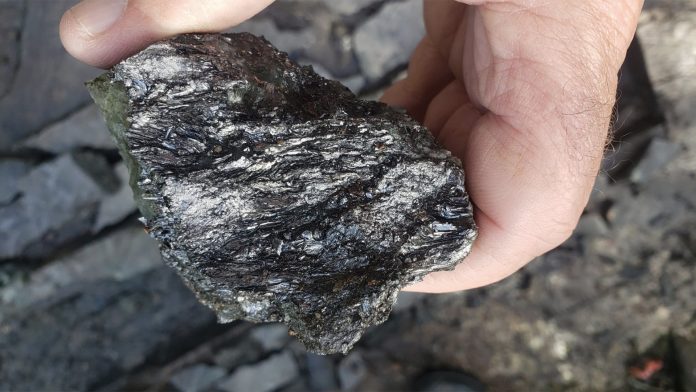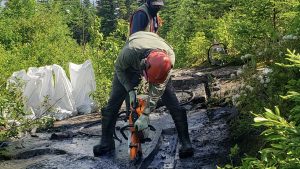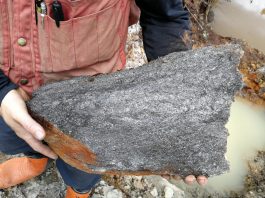James Cross, President and CEO of E-Power Resources (CSE:EPR), discusses why and how battery manufacturers are now protecting their graphite supply chain by acquiring graphite in the ground.
Electric vehicle (EV) batteries have two sides: The anode side and the cathode side. The cathode side contains the metals, while the anode side is made almost entirely of graphite. Different battery makers use different metals for the cathode side, and the metallic composition of cathodes constantly changes. On the other hand, the anode side remains the same, virtually all graphite. If you do not have graphite, you cannot make an EV battery. The typical electric vehicle battery for a car will have 50-100 kilos of graphite in it. For more information about this, I recommend our article written in Issue 15 of the Innovation Platform one year ago.
Increased investment
In Issue 15, we wrote a detailed article about how and why battery manufacturers must secure their graphite supply chain with resources in the ground. At that point in time, no EV battery industrial players had done this. The first instance of this occurred in February 2024 when General Motors, Panasonic, and Mitsui announced equity investments of more than USD$342m into Nouveau Monde Graphite. The first $87.5m has already been deployed, and the rest will follow as additional conditions are met.
These simultaneous announcements of massive equity investments came just 15 days after the announcement that Nouveau Monde had acquired 49% of the Uatnan Graphite Project it did not own already, giving Nouveau Monde 100% ownership. The timing appears to be no coincidence. The Uatnan Graphite Project is probably the best in all of North America. Uatnan also sits immediately adjacent to the Tetepisca Graphite Project of E-Power Resources. Both properties are in the North Shore Region of Québec, only about three and a half hours’ driving from the Port of Baie-Comeau, Québec, which also has ground transport links to the rest of North America and easy maritime links to European ports.
Major North American graphite projects
In North America, there are probably ten noteworthy graphite projects important enough for manufacturers of EV batteries to look at, hoping to secure their supply for a number of years. Nouveau Monde holds two of those, including what is probably North America’s best, Uatnan, as well as their other one, Matawinie. With those equity infusions of capital by General Motors, Panasonic and Mitsui, any graphite that will ever come from those properties is now off the table for every other battery manufacturer constructing a multi-billion dollar factory. That graphite, still in the ground, is now effectively controlled by General Motors, Panasonic and Mitsui.
Of those ten noteworthy graphite projects in North America, only one is a producing mine. It is the only producing graphite mine in Canada while the USA has no production at all. Mexico has only small artisanal production. The other projects are still pre-production and even pre-construction.
High demand: The hunt for more graphite
According to World Mining Data, in 2022, global natural graphite production was about 1.7 million metric tonnes. By 2035, Benchmark Mineral Intelligence expects the world to require 7.2 million metric tonnes. This is more than a fourfold increase in ten years and a few months. This equates to 97 new, world-class graphite mines going into production. North America probably needs at least 35 of those. With only about ten noteworthy projects on the continent, one would expect those companies building massive EV battery manufacturing plants for billions of dollars to be hunting for graphite projects. Now that two of them are taken, the speed of the hunting should increase.
Imagine knowing all that while building a factory for billions of dollars. Since our last article, Honda announced they would build an EV assembly plant and a stand-alone EV battery plant in Alliston, Ontario, for CAD$15bn. Production is expected to begin in 2028. The EV battery plant will have a 36 GWh capacity. To give you an idea of how much 36 GWh is, EV manufacturing capacity for the entire continent of North America in 2021 was 56 GWh. The EV assembly plant in Allison is expected to turn out 240,000 electric vehicles per year. Each one will need a battery. Each battery could require more than 100kgs of graphite. The Ontario Government is subsidising this project to the tune of CAD$2.5bn. This is just one of the many examples of downstream construction in the EV battery sector.
When does the money flow upstream? The answer is now. It started in February.
There is not enough graphite above ground for them, so they will have to secure it while it sits in the ground. Targets are sparse on the ground, and the top player in upstream North American graphite is now effectively controlled by General Motors, Panasonic, and Mitsui. Where will everyone else get their graphite?
Please note, this article will also appear in the 19th edition of our quarterly publication.









